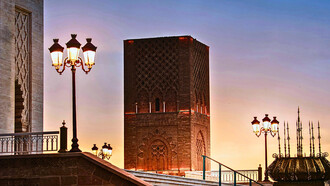When speaking about the iconic hotel Le Meurice in the most enigmatic of cities, it is good to remember that great things often have humble beginnings. The history of Paris dates to approximately 250 BC, when the Parisii, a Celtic tribe, settled on the banks of the Seine. Therefore, it is fitting that one of the finest hotels in Paris, founded by Louis-Augustin Meurice (1773-1828), finds its origins in a humble Inn in Calais set up to welcome the English to French shores after the Channel voyage. From those unassuming beginnings, there rose an establishment hosting kings and royalty.
Hostelry ran in the Meurice family’s blood, more a destiny, you might say, than a business. Louis-Augustin’s father, Charles-Augustin Meurice (1739-1820), had been a postmaster and proprietor of a mail coach, Le Capriol Royal. He opened his first inn in 1771 to cater to English travellers as they disembarked in Calais. In Paris in 1817, it was much later that his son decided to provide hospitality to English guests at the end of their journey. In 1818 he moved from his first hotel to new premises, and Le Meurice was born, moving to its current address, 228 Rue de Rivoli, in 1835.
Louis-Augustin Meurice imagined the first palace hotel in Paris. He was determined that it should be a place of absolute comfort, offering the luxury of incomparable service. The years and even centuries have passed, and crowned heads, captains of industry and the iconic figures of art and culture from around the world have come and gone at Le Meurice, from salons to suites, from secret rendezvous to sumptuous receptions, adding new legends to its history each time. And always, Le Meurice has stayed true to its spirit of excellence and distinction.
This strive for distinction is still prevalent as we were fortunate to ascertain during our brief spring visit to Paris, arriving at Gare de Lyon by courtesy of the smooth-running Eurostar from St Pancras, London, finding ourselves in much the same position as the long line of travellers from the British Isles staying at Le Meurice for the past two centuries. The hotel has claimed its proper place amongst the most prestigious destinations of Paris through the vision and tenacity of its current general manager, Franka Holtmann, a leading expert in palace hotels, having previously spearheaded the renaissance of luxury in some of the capital’s most exclusive hotel addresses.
Looking at the Jardin des Tuileries and the Louvre from our suite, we saw Paris unfold in the warm spring air. The gardens were promising much colourful blooming in the coming months in the wake of a regenerating project in collaboration with the Louvre Museum to restore the gardens’ former splendour by planting more sustainably to the delight of the guests of Le Meurice. In recent years Le Meurice has called on the expertise of Lally & Berger to refurbish its rooms and suites. Expanding on the first renovations, the garden spirit is ever-present, but, in addition, there are new inspirations taken from the artists and free minds who have marked the history and essence of this place.
For in-house dining, guests of Le Meurice are spoilt for choice. Whatever the time of the day, the Restaurant Le Dalí offers a gourmet escape, paying tribute to the hotel’s most memorable guest, whose eccentrics are fondly remembered and celebrated by staff. Following his ‘from the farm to your plate’ philosophy, chef Amaury Bouhours focuses on the produce and relatable dishes with frank flavours, all executed to perfection. The menu is more likely than not to contain hints of flavour and panache from Alain Ducasse’s 2-star Michelin restaurant in the next room. And after a shopping tour in rue Saint Honoré or a visit to the Louvre Museum, Le Dalí is the perfect place to get some strength with pastry chef Cédric Grolet’s teatime. The celebrated designer Philippe Starck has left his mark in both restaurants with the carpet in Le Dalí designed by his daughter, Ara, echoing her immense earlier canvas stretched across the ceiling. Both works distort reality much in the fashion of Dalí himself.
Le Meurice stands in the heart of a Paris that shares the grandeur of Versailles, a Paris of grand architecture and bustling commerce. In some way, Le Meurice belongs to Paris, just as Paris belongs to Le Meurice. Each has written the other’s history, has celebrated its moments of joy, and has had its griefs and revivals. To recall the history of Le Meurice is akin to telling the story of Paris. Ending this chapter, we find ourselves in Bar 228, offering guests an ideal respite, complete with decadent cocktails and lavish décor. Two glasses of Moet & Chandon seem an apt farewell until we meet again.















